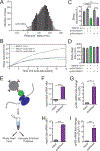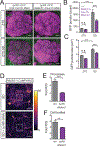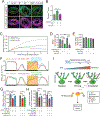Astroglial Calcium Signaling Encodes Sleep Need in Drosophila
- PMID: 33186550
- PMCID: PMC8442851
- DOI: 10.1016/j.cub.2020.10.012
Astroglial Calcium Signaling Encodes Sleep Need in Drosophila
Abstract
Sleep is under homeostatic control, whereby increasing wakefulness generates sleep need and triggers sleep drive. However, the molecular and cellular pathways by which sleep need is encoded are poorly understood. In addition, the mechanisms underlying both how and when sleep need is transformed to sleep drive are unknown. Here, using ex vivo and in vivo imaging, we show in Drosophila that astroglial Ca2+ signaling increases with sleep need. We demonstrate that this signaling is dependent on a specific L-type Ca2+ channel and is necessary for homeostatic sleep rebound. Thermogenetically increasing Ca2+ in astrocytes induces persistent sleep behavior, and we exploit this phenotype to conduct a genetic screen for genes required for the homeostatic regulation of sleep. From this large-scale screen, we identify TyrRII, a monoaminergic receptor required in astrocytes for sleep homeostasis. TyrRII levels rise following sleep deprivation in a Ca2+-dependent manner, promoting further increases in astrocytic Ca2+ and resulting in a positive-feedback loop. Moreover, our findings suggest that astrocytes then transmit this sleep need to a sleep drive circuit by upregulating and releasing the interleukin-1 analog Spätzle, which then acts on Toll receptors on R5 neurons. These findings define astroglial Ca2+ signaling mechanisms encoding sleep need and reveal dynamic properties of the sleep homeostatic control system.
Keywords: Drosophila; astrocyte; astroglial; calcium; homeostasis; homeostatic; sleep.
Copyright © 2020 Elsevier Inc. All rights reserved.
Conflict of interest statement
Declaration of Interests The authors declare no competing interests.
Figures







Comment in
-
Sleep: Astrocytes Take Their Toll on Tired Flies.Curr Biol. 2021 Jan 11;31(1):R27-R30. doi: 10.1016/j.cub.2020.10.083. Curr Biol. 2021. PMID: 33434483
-
Calcium signals in astrocytes of the fly brain promote sleep.Cell Calcium. 2021 Mar;94:102341. doi: 10.1016/j.ceca.2020.102341. Epub 2021 Jan 2. Cell Calcium. 2021. PMID: 33444913
References
-
- Blanchard S, and Bronzino JD (2012). Anatomy and physiology. In Introduction to Biomedical Engineering (Third Edition), Enderle JD and Bronzino JD, eds. (Boston: Academic Press; ), pp. 75–132.
-
- Reichert S, Pavón Arocas O, and Rihel J. (2019). The neuropeptide galanin Is required for homeostatic rebound sleep following increased neuronal activity. Neuron 104, 370–384.e375. - PubMed
-
- Huber R, Ghilardi MF, Massimini M, and Tononi G. (2004). Local sleep and learning. Nature. 430, 78–81. - PubMed
Publication types
MeSH terms
Substances
Grants and funding
LinkOut - more resources
Full Text Sources
Other Literature Sources
Molecular Biology Databases
Miscellaneous

